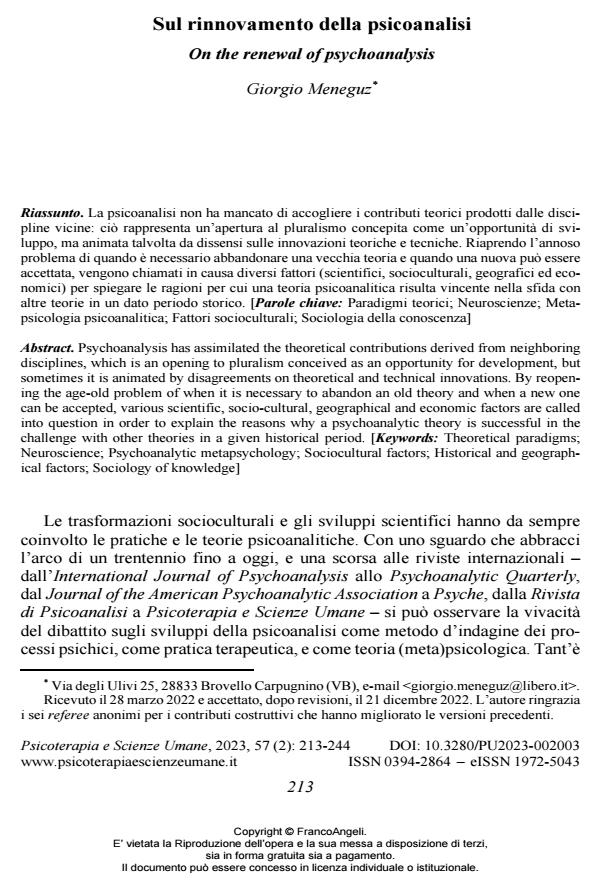Sul rinnovamento della psicoanalisi
Titolo Rivista PSICOTERAPIA E SCIENZE UMANE
Autori/Curatori Giorgio Meneguz
Anno di pubblicazione 2023 Fascicolo 2023/2
Lingua Italiano Numero pagine 32 P. 213-244 Dimensione file 163 KB
DOI 10.3280/PU2023-002003
Il DOI è il codice a barre della proprietà intellettuale: per saperne di più
clicca qui
Qui sotto puoi vedere in anteprima la prima pagina di questo articolo.
Se questo articolo ti interessa, lo puoi acquistare (e scaricare in formato pdf) seguendo le facili indicazioni per acquistare il download credit. Acquista Download Credits per scaricare questo Articolo in formato PDF

FrancoAngeli è membro della Publishers International Linking Association, Inc (PILA)associazione indipendente e non profit per facilitare (attraverso i servizi tecnologici implementati da CrossRef.org) l’accesso degli studiosi ai contenuti digitali nelle pubblicazioni professionali e scientifiche
La psicoanalisi non ha mancato di accogliere i contributi teorici prodotti dalle discipline vicine: ciò rappresenta un’apertura al pluralismo concepita come un’opportunità di sviluppo, ma animata tal-volta da dissensi sulle innovazioni teoriche e tecniche. Riaprendo l’annoso problema di quando è necessario abbandonare una vecchia teoria e quando una nuova può essere accettata, vengono chiamati in causa diversi fattori (scientifici, socioculturali, geografici ed economici) per spiegare le ragioni per cui una teoria psicoanalitica risulta vincente nella sfida con altre teorie in un dato periodo storico.
Parole chiave:Paradigmi teorici; Neuroscienze; Metapsicologia psicoanalitica; Fattori socioculturali; Sociologia della conoscenza
Giorgio Meneguz, Sul rinnovamento della psicoanalisi in "PSICOTERAPIA E SCIENZE UMANE" 2/2023, pp 213-244, DOI: 10.3280/PU2023-002003